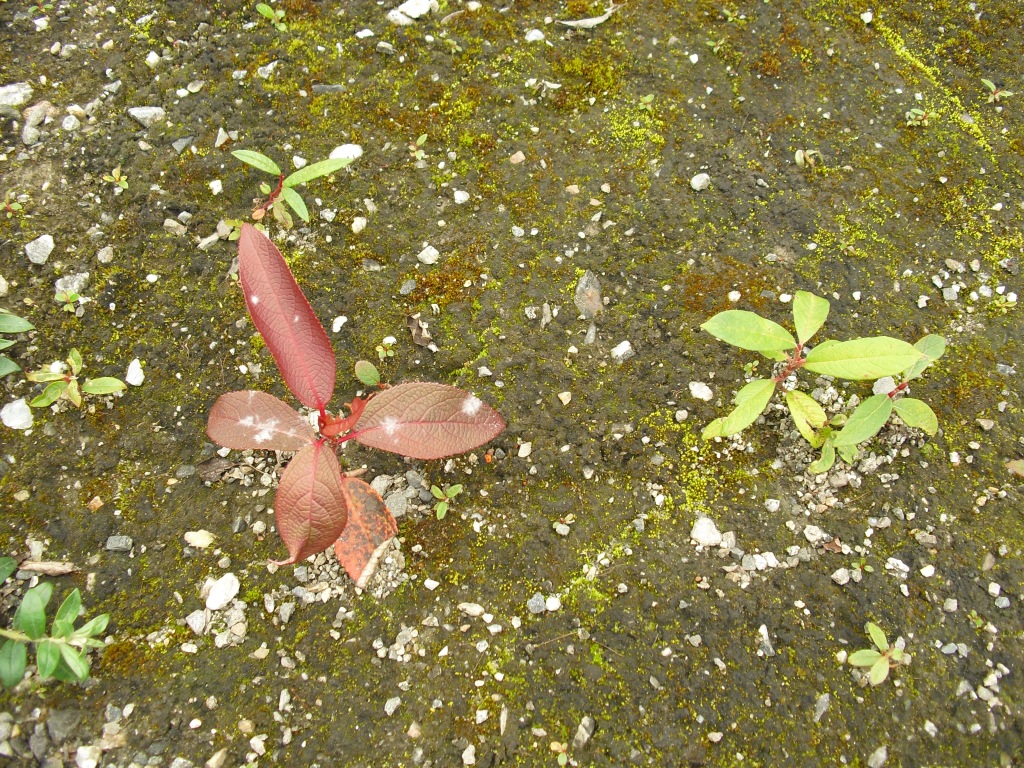Since the mid-19th century, increasing temperatures have resulted in the retreat of mountain glaciers on all continents. When glaciers retreat, they leave “glacial debris.” This debris serves as new substrate for soil and ecosystem development. This is often called “parent material” in the process of soil formation.
The glacial debris is initially loose material, which is prone to erosion and does not retain water very well. This results in increased mountain risks such as landslides and flooding. Thus, the quick establishment of a closed plant cover is desirable.

We studied a unique glacier, the Hailuogou glacier, which allowed us to learn more about how a forest system quickly established itself in this region. This glacier is located in Sichuan, China at an elevation of 2900-3000 m above sea level. Strikingly, the Hailuogou glacial area has a mature forest that developed surprisingly fast in less than 100 years. This is despite the local glacial debris being dominated by nutrient-poor granite with a small contribution of carbonate minerals.
Plants need nutrients, so they cannot grow well on the rocky debris that results from glaciers without “weathering” of the debris. The process of weathering – slowly breaking down rock into minerals – takes place by physical, chemical, and biological processes.
The essential mineral nutrients that plants need most are nitrogen (N), and phosphorus (P). They also need potassium (K), calcium (Ca), and magnesium (Mg). Except for nitrogen which is taken up by specialized microorganisms from the atmosphere, all these minerals come from the parent material, In this case, the glacial debris of the Hailuogou glacier.

Among the rock-bound elements, calcium, magnesium, and potassium have important physiological and structural functions in plants. Calcium is needed for the formation of cell walls and cell membranes, controlling plant growth. Magnesium is mainly needed for the key pigment of photosynthesis, the chlorophyll. Potassium is particularly important in regulating the plant water use.
During mineral weathering, these elements are released from minerals in the rock to soil solutions. Once freed, these elements can move among the diverse geochemical and biological reservoirs in ecosystems. These included soil, organic layers, and above and belowground biomass.
In glacier retreat areas, “pioneer plants” start colonizing young surfaces soon after glacier melt. In the Hailuogou area such plants include sea buckthorn, willow, or poplar. Growing colonies frequently last decades, if not sometimes centuries, to develop a full cover.

Our team was able to study a glacier retreat area that had developed in approximately the last 130 years. The glacier retreated by about 2 km, or an average of 15 m annually during this time. The initial vegetation development from bare soil was scattered mosses, lichens, grasses, and bushes. The area then was covered fully by bushes and deciduous trees. This correlated with a fast weathering of the calcium-carbonates in the parent material and thus a fast initial delivery of calcium.
The presence of carbonates kept the soil pH in a favorable near-neutral range. This makes the essential nutrients more bioavailable to plant life. Neutral pH favors the release of nutrients from organic matter such as nitrogen, phosphorus, and sulfur by bacteria and fungi as well.
We therefore suggest that it is the calcium-carbonates in the parent material that contributed to the fast establishment of a closed forest cover in only a few decades. There were other slower chemical weathering processes that guaranteed a sustained delivery of potassium, calcium, and magnesium in the later stage, albeit at a lower level.

The development of the coniferous forest is also explained by the decreasing nutrient supply in spite of the young age of the soil. Deciduous trees need more nutrients to continue developing leaves every year, but coniferous trees do not. In addition, coniferous trees lose less leaf litter yearly, which also reduces nutrient requirements.
Our study suggests that the vegetation development along the Hailuogou Glacier retreat chronosequence was well synchronized with the changing weathering of different minerals. We suggest that this synchronization, which is not possible on soils developed from carbonate-free or particularly carbonate-rich parent material weathering very slowly, explained the fast forest development.
Answered by Nuria Basdediós and Wolfgang Wilcke, Karlsruhe Institute of Technology, and Yanhong Wu, Chinese Academy of Sciences
Dr. Wilcke and associates published their study in Soil Science Society Journal of America.
To receive notices about future blogs, be sure to subscribe to Soils Matter by clicking on the Follow button on the upper right! Explore more on our webpage About Soils. There you will find more information about Soil Basics, Community Gardens, Green Infrastructure, Green Roofs, Soil Contaminants, materials for Teachers and more.

Very interesting.